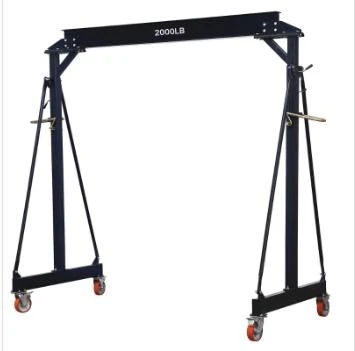gantry girder crane
Understanding Gantry Girder Cranes An Overview
Gantry girder cranes are critical pieces of equipment in various industrial contexts, known for their versatility, strength, and efficiency in lifting heavy loads. These cranes are particularly prevalent in manufacturing facilities, shipyards, and construction sites, where large materials need to be moved regularly and safely. Understanding their design, operation, and applications can provide insights into their significance in the modern industrial landscape.
Design and Structure
Gantry cranes are distinguished by their unique structure, which consists of a bridge-like framework supported by legs that move on wheels or tracks. The primary component, the gantry girder, acts as the horizontal beam that carries the lifting mechanism. This design allows the crane to straddle over an area or workstation, providing unobstructed access beneath it for loading and unloading.
The girder is typically made from robust materials such as steel, ensuring that it can withstand the considerable forces exerted during lifting operations. Gantry cranes can be designed in various sizes, from small mobile units suitable for workshops to massive fixed structures used in shipping terminals.
Furthermore, gantry cranes can be configured in different ways, including single-girder and double-girder designs. Single-girder cranes are lighter and more cost-effective, while double-girder cranes offer increased lifting capacity and stability, making them suitable for more demanding applications.
Operation and Mechanics
Operating a gantry girder crane involves a coordinated effort between the crane operator and ground personnel
. The crane is typically equipped with a hoisting mechanism that can include hooks, slings, or other specialized attachments to lift and manipulate loads. Most modern gantry cranes come with electric or hydraulic systems for more efficient movement.The operation of these cranes is governed by strict safety protocols. Operators are trained in load estimation and crane operation to prevent accidents and ensure safe handling of materials. Many gantry cranes are also equipped with state-of-the-art safety features, such as limit switches, emergency stop buttons, and overload indicators that further enhance operational safety.
gantry girder crane

Applications
The versatility of gantry girder cranes makes them suitable for a wide range of applications. In manufacturing, they are commonly used for loading and unloading components onto assembly lines. In warehouses, they facilitate the movement of goods, while in construction, they assist with the installation of heavy equipment and materials.
Gantry cranes are also essential in shipyards, where they can lift heavy ship components from the ground and place them into position for assembly. Their ability to cover large areas means that they can operate effectively in expansive environments without the need for extensive supporting infrastructure, making them an economical choice for many industries.
Advantages of Gantry Girder Cranes
The primary advantage of gantry cranes is their adaptability. They can be customized to meet specific operational needs, and their mobility allows them to be relocated as required. Furthermore, their elevated design means they do not require additional floor space, which can lead to significant savings in both materials handling and facility layout.
Economically, gantry cranes can provide a significant return on investment. Their efficient lifting capabilities reduce labor costs and improve production times. Additionally, their robust design results in longevity, which means they can serve an organization for years with minimal maintenance.
Conclusion
In summary, gantry girder cranes are invaluable tools in many industrial settings, providing efficient, safe, and versatile lifting solutions. Their unique design and operational capabilities make them suitable for various applications, ranging from manufacturing to construction and shipbuilding. By understanding the features and benefits of gantry cranes, industries can leverage this technology to improve productivity, enhance safety, and ultimately contribute to operational success. The continued evolution and innovation in gantry crane design will likely lead to even greater efficiencies and advancements in the future.
-
Unlock Seamless Relocation with Our Heavy Equipment Moving ExpertiseNewsJun.06,2025
-
Unleash Unrivaled Flexibility with Our Adjustable Gantry CraneNewsJun.06,2025
-
Unleash Heavy-Duty Efficiency with Our Industrial Gantry Crane SolutionsNewsJun.06,2025
-
Revolutionize Steel Handling with Our Magnetic Lifter RangeNewsJun.06,2025
-
Master Equipment Mobility with Premium Machinery Mover SolutionsNewsJun.06,2025
-
Elevate Your Material Handling with Magnetic Lifter TechnologyNewsJun.06,2025
-
YS Permanent Lifting Magnets: The Smarter Way to Handle SteelNewsMay.22,2025
